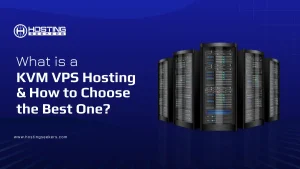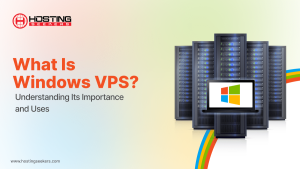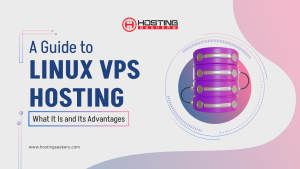
Understanding Virtualization Technologies in VPS Hosting
VPS Updated on : December 17, 2024Virtualization Technologies in VPS Hosting
Virtual Private Server (VPS) have become a popular choice for businesses and individuals seeking a balance between performance and affordability.
At the core of VPS hosting lies virtualization technology, a powerful concept that has revolutionized the way servers are used. This blog aims to delve into the intricacies of virtualization technologies in VPS hosting, exploring VPS virtualization solutions, their fundamentals, benefits, and considerations.
Table of Content
What is a Server?
A server is a powerful computer or software application that is developed to provide services, functionality, or resources to other computers, stated as clients, within a network.
In the context of VPS hosting, a server typically refers to a physical machine or a virtualized instance of a machine that performs specific tasks to support the functioning of various applications and services.
Server virtualization; How does it work
Server virtualization is a technology that allows a single physical server to host multiple virtual instances, each operating as an independent and isolated environment. This is accomplished through a hypervisor, a specialized software layer responsible for creating, managing, and allocating resources to these virtual instances. Here’s a more detailed explanation of how server virtualization works:
1. Hypervisor Installation
A hypervisor, also known as a Virtual Machine Monitor (VMM), is installed on the physical server hardware. The hypervisor acts as an abstract layer between the hardware and the virtual instances, facilitating their creation and management.
2. Creation of Virtual Machines (VMs)
Virtual machines are individual instances of operating systems and applications that run on the same physical server. The hypervisor allows the creation of multiple VMs on a single physical server, each functioning as if it were running on its dedicated hardware.
3. Resource Allocation
The hypervisor allocates resources from the physical server to each virtual machine. This includes CPU processing power, memory (RAM), storage, and network bandwidth.
Resource allocation is managed dynamically, allowing flexible distribution based on the needs of each virtual machine.
4. Isolation and Independence
Each virtual machine operates in isolation from the others. This means that activities or issues in one virtual machine do not affect the others. Virtual machines are independent entities with their own operating systems, applications, and configurations.
5. Multiple Operating Systems
Server virtualization enables the simultaneous running of multiple operating systems on the same physical hardware. This flexibility allows businesses to run different applications that may require distinct operating environments without the need for separate physical servers.
Types of Server Virtualization
1. Virtual Machine Model (or Full Virtualization)
In this model, a hypervisor emulates the entire hardware environment, creating a virtual machine (VM) that operates as an independent entity. Each VM has its own operating system and applications, providing complete isolation from other virtual machines.
2. Paravirtual Machine (PVM)
PVM involves modifying the operating system to be aware of the virtualized environment, enabling more efficient communication with the hypervisor. This results in improved performance compared to full virtualization
3. OS-Level Virtualization
This approach, also known as containerization, involves partitioning the operating system into containers. Each container runs its own isolated applications and shares the host operating system’s kernel, optimizing resource utilization.
Benefits of Virtualization in VPS Hosting

Server Virtualization involves creating multiple virtual instances or environments on a single physical server. This is achieved through a hypervisor, a software layer that enables the management and creation of these virtual instances. The hypervisor allocates resources like CPU, memory, and storage to each virtual environment, enabling multiple operating systems to run independently on the same physical hardware. Let’s explore virtualization benefits in VPS hosting.
1. Resource Isolation and Allocation
VPS Virtualization solutions include the partitioning of a physical server into multiple virtual machines (VMs), each functioning as an independent entity.
The hypervisor, a specialized software layer, is responsible for allocating resources from the physical server to each virtual machine. These resources incorporate CPU processing power, memory (RAM), storage, and network bandwidth.
2. Cost-Efficiency
Cost-efficiency is a significant advantage of virtualization in the context of running multiple virtual instances on a single physical server, particularly in Virtual Private Server (VPS) hosting environments.
Also, virtualization allows the creation of multiple virtual instances (VMs) on a single physical server. This means that the available computing resources, like CPU, memory, and storage are used to their maximum potential.
3. Scalability and Flexibility
Scalability and flexibility are key advantages that virtualization brings to the realm of Virtual Private Servers (VPS) hosting, allowing businesses to adapt rapidly to evolving resource needs.
VPS Virtualization allows for dynamic allocation of resources to virtual machines based on demand. When there is an increase in workload or resource requirements, administrators can easily allocate additional CPU, memory, and storage to specific virtual instances.
4. Improved Security
Improved security in virtualized environments, mainly in the context of Virtual Private Servers (VPS)m is closely tied to the concept of isolation. Each VPS operates as an independent virtualized instance with its dedicated resources including memory, CPU, and storage.
Also, the separation of VPS limits the potential attack surface. A compromise within one VPS does not automatically grant access to others, as they are isolated at the virtualization layer.
5. High Availability
High availability in the context of virtualization involves the implementation of strategies and mechanisms to ensure that services and applications remain accessible and operational with minimal downtime, especially in the face of hardware disruptions or failures.
In the context of high availability, load balancing ensures that no single server is overwhelmed, reducing the risk of service degradation and enhancing the overall resilience of the infrastructure.
VPS Server Virtualization – What to Look Out For?
Choosing a VPS hosting provider requires careful consideration of various factors to ensure that the virtualization environment meets your specific requirements. Here’s a detailed exploration of what to look out for when selecting a VPS hosting provider:
Type of Virtualization Technology:
Different VPS providers may use various virtualization technologies, such as KVM (Kernel-based Virtual Machine), OpenVZ, VMware, or Hyper-V. Each technology has its advantages and limitations.
KVM: Provides full virtualization and allows running different operating systems independently.
OpenVZ: Offers container-based virtualization, where multiple containers share the same OS kernel. It may have more resource-efficient use but with less isolation than full virtualization.
VMware and Hyper-V: Widely used in enterprise environments, offering robust features and performance.
Resource Allocation Policies:
Understand how the hosting provider allocates resources like as RAM, CPU, storage and bandwidth to VPS instances. Check if the provider guarantees a specific number of resources of if it operates on a shared model where resources are dynamically allocated based on demand.
Look for providers that offer scalable resource plans, enabling you to easily adjust your resources as your need evolves.
Reputation for Reliability and Uptime:
Research the hosting provider’s reputation for reliability and uptime. Look for reviews, testimonials, or independent performance monitoring reports.
A reliable hosting provider should have a track record of high uptime, minimizing the risk of service interruptions and ensuring your VPS remains accessible to users.
Support and Customer Service:
Evaluate the quality of customer support offered by the hosting company. Check the availability of support channels, response times, and the expertise of support staff.
Look for a provider offering 24/7 customer support, especially if your VPS hosts critical applications or websites that need continuous availability.
Security Measures:
Make sure that the hosting provider implements robust security measures to protect your data and VPS. This includes firewalls, DDoS protections, regular security audits, and data encryption.
Check if the VPS virtualization provider offers features such as automatic backups and snapshots for data recovery in case of unexpected events.
Conclusion
Understanding virtualization technologies in VPS hosting is crucial for businesses and individuals seeking efficient, scalable, and secure hosting solutions. VPS virtualization Solutions not only optimize resource usage but also enhance overall performance, making VPS hosting a compelling choice for a wide range of applications.
Frequently Asked Questions
Q1. What is virtualization in VPS hosting?
Ans: Virtualization technologies in VPS hosting involves creating multiple virtual instances on a single physical server, allowing for the efficient use of resources and isolation between different environments.
Q2. How does server virtualization work in VPS hosting?
Ans: Server virtualization in VPS hosting works by using a hypervisor to create and manage virtual environments on a physical server. Each virtual environment operates independently, with its own operating system and applications.
Q3. Can I scale my VPS easily with virtualization?
Ans: Yes, VPS virtualization solutions enable easy scalability in VPS hosting. Businesses can add or remove virtual instances based on demand, providing flexibility to adapt to changing resource requirements.
Q4. How does virtualization improve security in VPS hosting?
Ans: Virtualization management enhances security by providing isolation between virtual environments. A security breach in one VPS does not affect others, adding an extra layer of protection against potential threats.
Q5. Can virtualization ensure high availability in VPS hosting?
Ans: Yes, virtualization technologies facilitates the creation of redundant and failover systems, ensuring continuous operation even in the face of hardware failures. High availability is a key benefit of virtualization in VPS hosting.




